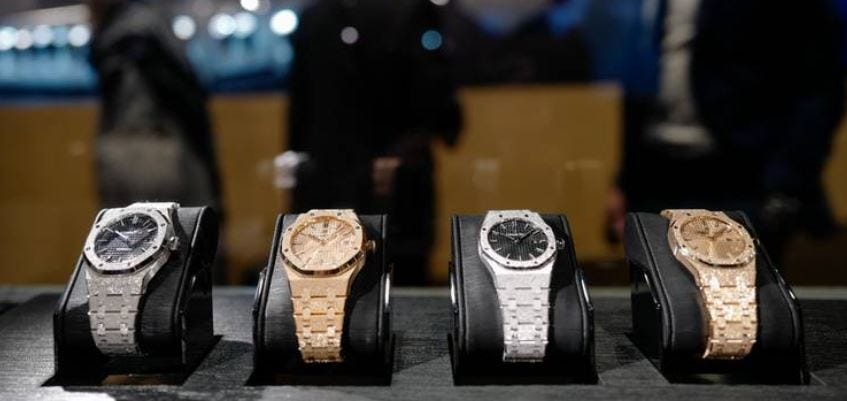Why Swiss watches are clocking up more sales in the US
After more than a decade, Americans are once again spending more on Swiss watches than anyone. One big reason is that they are thinking differently about them.
Call it less bling, more investing.
During the pandemic in the US, there has been a boom in the value of collectibles of all sorts — from baseball cards to vintage video games. The reasons are many, but one central catalyst is that people had more time and fewer ways to spend their money. That led to almost anything with scarcity being seen as an investment and finding a robust secondary market. The rising tide lifted Switzerland's high-end watch industry, with prices surging.
“It has become an investment piece,” said 68-year-old Albert Ganjei, who, as founder of Boston-based European Watch Company, has been selling timepieces for nearly three decades. “It has totally changed.”
While some watches are so coveted that they sell for millions at auction — a Patek Philippe recently sold for $6.5 million — and others are appreciating at a faster rate, many still tend to lose value over the years, especially when accounting for maintenance costs.
Exports of Swiss watches to the US increased 55 per cent last year to more than $3 billion, nudging America past China for the top spot. This growth comes amid uncertainty in the industry’s other major markets. Russia’s invasion of Ukraine may hurt consumer confidence in Europe. And China is grappling with its worst coronavirus outbreak since the start of the pandemic.
For years, the US presented a tricky market for a lot of marquee Swiss brands. They faced behemoth Rolex, which still controls about a third of the market. A belief that America’s well-heeled consumers would rather splurge on mansions, yachts and cars didn’t help matters. Prevailing wisdom also said that they didn’t have the same appreciation for intricate timepieces as shoppers in Europe and Asia.
But the past few years have debunked a lot of that thinking and kicked off a gold rush of sorts with brands investing more resources in America. There are plenty of reasons to expect that there’s more growth coming. In the US luxury industry, the percentage spent on watches is smaller than in other top markets, according to Oliver Mueller, a brand consultant at LuxeConsult in Aubonne, Switzerland.
For Swatch Group, which makes the Tissot, Omega and Blancpain brands, America has major potential, according to chief executive Nick Hayek. The company’s US sales are a third of Asia, but doubled over the past two years. One reason that Mr Hayek is so bullish: about 70 per cent of US consumers don’t really know what mechanical watches are, he said.
“The more we inform and train the consumer in the US, the more potential we have,” Mr Hayek said.
H. Moser & Cie, which only produces about 2,000 timepieces a year at prices averaging 40,000 Swiss francs ($42,600), opened an American subsidiary this month after the US became its fastest-growing market in 2020. When chief executive Edouard Meylan joined the Swiss watch maker in 2013, the US generated less than 5 per cent of revenue, and now it’s about a third.
Watches of Switzerland Group used to see about a dozen Rolex models sell out at its stores in the US. But now demand is so high that many more models require waiting lists. It has been expanding with a new store in Cincinnati, after opening a handful of others in Minneapolis, Aspen and Greenwich.
The pandemic pushed watch makers — like so many other industries — to improve their e-commerce options, which has helped attract the younger shoppers it needs to sustain itself. It has also invested more in marketing to them. Moser’s Mr Meylan estimated that the average age of the company’s US customers has dropped to about 40 from 60 a decade ago.
“Over the past five years, we’ve seen the demographic come down in age,” said Joshua Ganjei, who followed in his father's footsteps and now heads European Watch Company. “There is a bigger advertising spend from the manufacturers to target them and get them hooked at a younger age.”
Luxury watches also make for good fodder on social media. On TikTok, there are scores of clips ranging from influencers unboxing timepieces to aficionados explaining how a watch works. Rolex has an official account with almost 23,000 followers, even though it doesn’t have any videos posted. And yet, the hashtag “Rolex” has generated 2.5 billion views.
“Social media doubled the community interested in watches,” Mr Meylan said.
That’s helped create enough frothiness to boost the market in places like Austin, Texas, according to Philip John Ingenito, a 43-year-old sales manager at Bernard Watch, a watch retailer in the area.




Comments
Post a Comment